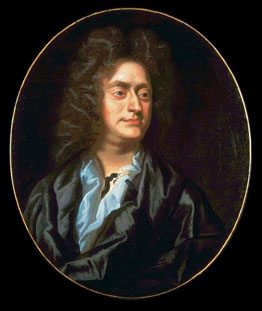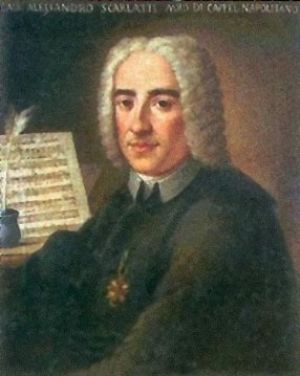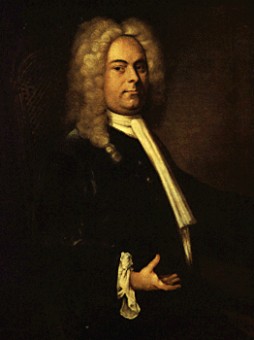Love in Four Nations
Récital
Erika Escribá-Astaburuaga, soprano
Orhan Memed, harpsichord
Henry Purcell (1659-1695)
Music for a while
John Dowland (1563-1626)
Come again
Anonymous
Cloris sighed
Henry Purcell
The Blessed Virgin’s Expostulation
Antonio de Literes (1673-1747)
from Acis y Galatea
Confiado jilguerillo
José Marin (1618-1699)
Ojos pues me desdeñáis
Anonymous
El baxel está en la playa
No hay que decir el primor
Jean-Philippe Rameau (1683-1764)
from Indes galantes
Hébé : « Vous, qui d’Hébé… »
Hébé : « Amants sûrs de plaire »
Jean-Philippe Rameau
from Platée
La Folie : « Formons les plus brillants concerts… »
Alessandro Scarlatti (1660-1725)
from Griselda
« Nell’aspro mio dolor »
« Di che sogno o che deliro »
« Finirá barbara sorte »
Georg Friederich Händel (1685-1759)
from Semele
Semele : « Oh sleep why dost thou leave me… »
Semele : « Endless pleasure, endless love… »
We begin in England where Henry Purcell, at the end of the seventeenth century, succeeded as no other of his contemporaries to infuse new life into song.

Following on the great tradition of music-making in England at the beginning of the century, Purcell took inspiration as well from current fashions coming from France and Italy, though retaining a very personal voice. There can perhaps be no better way to open a song recital than with Music for a while which sets the stage for an evening “where all your cares beguile”. Reaching back earlier in the century, we continue with a strophic song from the mysterious and melancholic John Dowland. Come again is perhaps Dowland’s most joyous of melodies with its sequence of ascending fourths underlying the sweet expectation of love. Those listeners familiar with the language of seventeenth-century English poetry will not miss the double meaning of some words betraying a message that is at once rather innocent and clearly sexual. Cloris sighed, an anonymous song from the late sixteenth/early seventeenth century reveals the torment of a lover slain. An anonymous text, based likely on the assassinated king of Macedon Amyntas II, it is a beautiful work in miniature within the refined prism of the musical style of the period: but the voice of Cloris and her lament over her dead lover is very real. We complete our tour of England with one of the great works of Purcell, his Blessed Virgin’s Expostulation. Taken from Luke, Chapter 2, verse 42, the text traces the account of Mary’s sudden realisation that her 12-yr-old son has been lost on the journey from Jerusalem. A mother’s desperation, her fears, the love of her child, her memories of happier moments, her doubt in her faith, all aspects are revealed in the most remarkable way by Purcell in a form that combines recitative, dance, and aria.
The baroque zarzuela, Acis y Galatea, of Antonio de Literes opens the Spanish section of the programme.

The intimacy of Literes’s musical approach reflects the delicacy of the text, comparing the yearning of the two lovers to a flighty bird. Ojos pues me desdeñais of José Marin stresses the pain of a love unrequited and the desperation that a lover can feel. Two anonymous songs, El baxel está en la playa and No hay que decir el primor are seemingly innocent songs based on folk melodies but metaphor and allegory reveal the inner turmoil between lovers. Musically, we are brought into a world that is very firmly rooted in Spanish idioms and rhythmic complexity.
Jean-Philippe Rameau wrote his first opera at the age of 50, after already establishing himself as a first-rate composer for the church and in collection of pièces de clavecin.

A worthy successor to Jean-Baptiste Lully, Rameau gained recognition and success by the sheer inventiveness of his talent and the inimitable and idiomatic writing for the voice. Les Indes galantes was first performed in 1735 and the opéra-ballet was to be performed almost 200 more times during Rameau’s lifetime. We hear two arias from the Prologue: Hébé invites youthful lovers from France, Italy, Spain and Poland to join together to celebrate the pleasures of love. Later in the prologue, we are warned by Hébé to « sing your happiness… but do not offend the mystery of love ». Ten years later, Rameau made so bold as to compose a ballet-bouffon in the work of Platée. The tricks and games between gods outlined in the Prologue receive a serious consternation from Love : « how could there be a play without the inspiration of love ? » The highlight of the opera is the entrance of La Folie (Madness) in Act II who uses the allegory of Apollo and Daphne to warn against the dangers of love. It is some of the most virtuosic writing by Rameau for the voice.
The little-known opera by Alessandro Scarlatti, Griselda, which dates from 1721 takes its story from Boccaccio's Decameron and provides us will another facet of love.

The scorned, rejected Griselda, once Queen of Sicily, finds herself banished back to the place of her humble origins while having to repel the advances of a courtier. In “Nell’aspro mio dolor”, she expresses with vehemence to her would-be suitor that “love gave me a soul of faithfulness and constancy”. Scarlatti underlines the exasperation and breathlessness of Griselda’s desperation in “Di che sogno o che deliro” with a style of vocal writing that presents dramatic challenges to the singer. In Act II, Griselda is prepared to sacrifice her life for the love she once knew, in “Finirá barbara sorte”, she sings that “I who have no more to lose”: there is a poignant plaintiveness in Scarlatti’s music that prefigures in a striking way Mozart.
Two arias from Handel’s Semele complete the programme, chosen for their sheer beauty and musical interest.

Semele finds herself removed from the tedium of mortals into the kingdom of Jove, only to be abandoned by him, beyond the reach of mortal eyes. She wonders why sleep has left her and asks for her “wandering love” to be restored to her arms. Earlier in the opera, at the moment when she is whisked away to the heavens, she rejoices in her new elevated status with the brilliant “Endless pleasure, endless love”. Handel chooses a sprightly gavotte to underpin the element of dance in this final piece.
Orhan Memed
November 2010